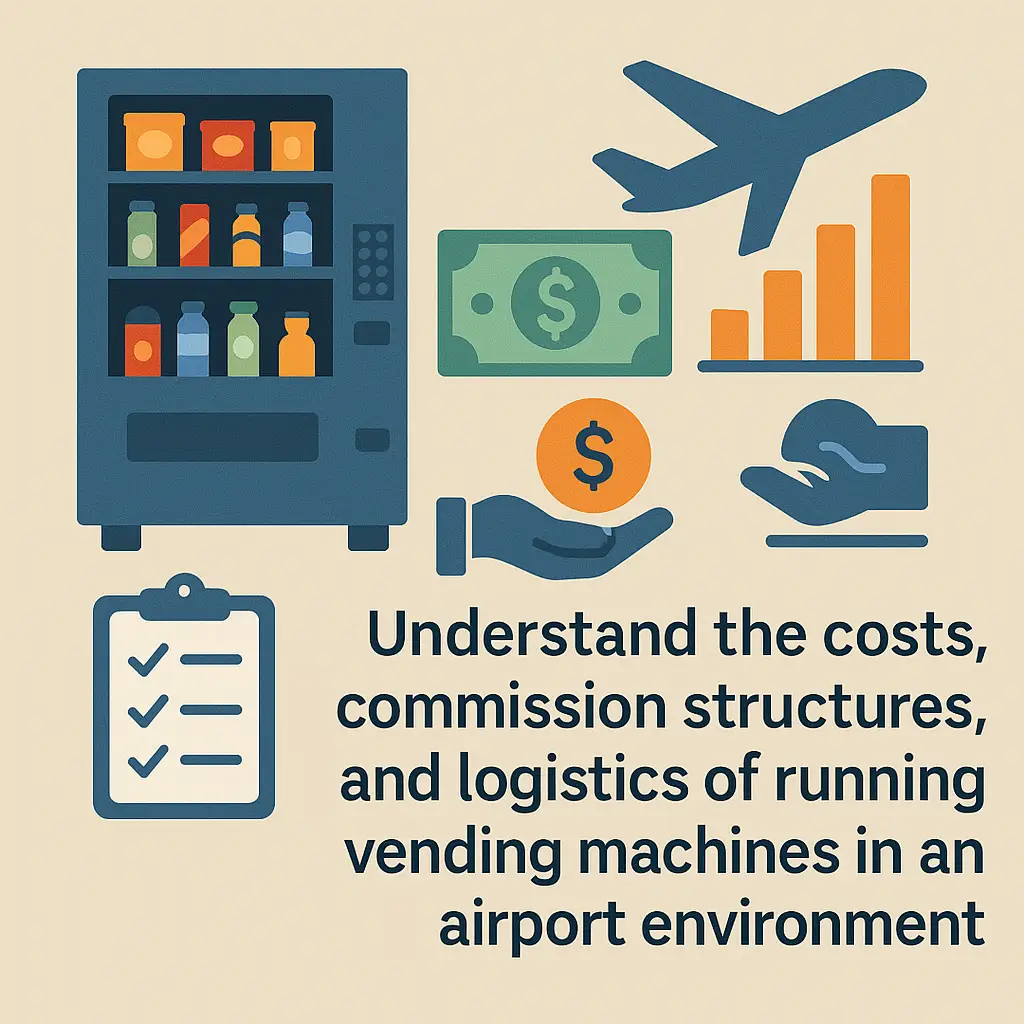Cost of Vending Services for Airports
Understand the costs, commission structures, and logistics of running vending machines in an airport environment.
Back to Vending for Airports ResourcesUnderstand the costs, commission structures, and logistics of running vending machines in an airport environment.
Back to Vending for Airports ResourcesCosts are shaped by space rental fees, commission percentages, machine type, and maintenance frequency. Airports often require higher commissions but offer higher traffic volume in return.
![]() Understand typical airport vending commission structures
Understand typical airport vending commission structures
![]() Learn how space fees impact overall vending revenue
Learn how space fees impact overall vending revenue
![]() Explore installation, service, and restocking cost factors
Explore installation, service, and restocking cost factors

Launching a vending program in an airport involves unique financial considerations. Beyond the machine itself, airport locations typically include space rental fees, commission agreements, and operational costs that impact overall profitability. Unlike typical commercial properties, airports often charge higher commissions to account for the premium foot traffic and visibility these spaces provide.
Commission models usually range from a flat percentage of sales to tiered structures based on performance. Some airports set minimum revenue expectations, while others adjust rates depending on machine type and placement. Reviewing these details upfront is critical to avoid unexpected financial obligations.
Several core elements shape total airport vending expenses:
Additional considerations include utilities, insurance, and compliance with airport security regulations. These can affect both ongoing expenses and operational logistics.
While the costs can be significant, airport vending often delivers higher daily sales than traditional placements. Strategic location selection and a strong product mix can offset higher commissions and rental fees. Reviewing revenue potential for airport vending can provide valuable benchmarks for planning. Additionally, understanding touchless vending technologies may reveal opportunities to attract more travelers and streamline operations.
Before committing to an airport vending program, it's wise to evaluate successful case studies and explore how different cost structures perform over time. Cost transparency and careful planning are key to maximizing returns in these high-traffic environments.
If you're exploring vending options for your business, Vending Exchange can help simplify the process. Delivery, Installation and Equipment is provided at no cost to you - vendors provide the machines, keep them stocked, and handle all servicing. Whether you need a provider or full-service management, just fill out the form on this page to get started.
Airports often charge higher commissions than standard commercial locations, typically ranging between 15% and 30% of gross sales.
Yes, most airports charge space rental or concession fees based on location traffic and visibility.
Yes, airports may require security clearances, off-hour installations, and coordination with facility teams to avoid disruptions.
In many cases, utility costs are included in rental agreements, but some airports may charge separately for power usage.
They can be, due to stricter uptime expectations and security access procedures for service staff.
High-traffic areas typically require daily or multiple-times-per-week servicing to keep machines stocked.
Yes, locations near gates, security checkpoints, and waiting areas usually carry higher fees due to increased foot traffic.
Yes, strong daily sales often offset the higher commissions and rental fees, especially with strategic placement.
Yes, background checks and access badges for service personnel may involve additional fees.
Combo machines, glass-front units, and AI coolers are popular choices, offering product variety and efficient service.